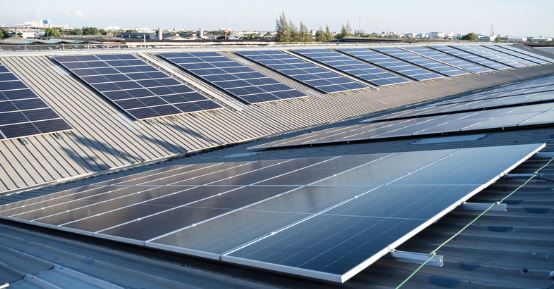Sunlight is a versatile and readily available energy source that plays an important role in transitioning from fossil fuels to renewable resources and creating an independent energy supply. Solar cells convert sunlight into electricity. Solar cells made from perovskite semiconductors are proving to be very promising due to their high efficiency, low production costs, and great potential. Despite all the advancements, however, individual perovskite cells still have a limited efficiency. This limitation can be overcome if you stack two solar cells with different bands gaps. Band gap refers to a material characteristic that determines which part of the incident spectrum a solar cell absorbs in order to produce electricity.
Efficiency Boost by Stacking
Tandem solar cells can use a wider spectrum of the spectrum to generate more electricity and are more efficient. Tandem partners for solar cells made from other materials and all-perovskite hybrid solar cells are the ideal perovskite solar cell with a tunable gap. These solar cells are low-cost, easy to produce, have solution-based processing, can be combined with other perovskite bands gaps, and allow for mechanical flexibility. If they meet the requirements of stability and scalability, researchers expect all-perovskite tandem sun cells to have a large market share. Scalability is the ability to apply new designs at higher scales and in large quantities.
Tenure-Track Professor Ulrich W. Paetzold, from the Institute of Microstructure Technology and the Light Technology Institute at KIT, has developed a prototype for high-efficiency all perovskite tandem solar panels. Researchers were able scale up individual perovskite cell efficiency up to 23.5 percent with an aperture area 0.1 square cm to all-perovskite tandem modules efficiency up to 19.1% with an aperture area 12.25 square cm. The area that is usable is the part of the surface that isn’t covered by electrodes frames, fasteners or frames. The loss of efficiency in scaling is very low at around five percent.
Three Innovations Enable Scaling
Three key innovations are the basis of this remarkable result. KIT researchers improved efficiency by optimizing light path and reducing reflections within the solar cell architecture. The efficient layout of tandem solar modules was achieved using high-throughput laser engraving. This allows for the production functional tandem solar mini-modules that have two-terminal interconnected cells strips. They also used industrially-proven coating techniques (blade coating, vacuum deposition). KIT’s combined expertise was crucial in achieving this remarkable research result. This will motivate further research in academia and industry to make all-perovskite tandem sun modules a viable and sustainable technology.
